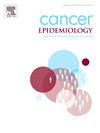The clinical relevance of microplastic exposure on colorectal cancer: A systematic review
IF 2.3
3区 医学
Q3 ONCOLOGY
引用次数: 0
Abstract
Microplastic exposure can contaminate multiple organs through nasal, dermal, and respiratory routes. The effect of microplastic exposure on colorectal adenocarcinoma development has gained attention. This systematic review aimed to summarize studies of microplastic exposure in humans with colorectal cancer. The relevant studies were collected through a computer-assisted search in PubMed, ISI Web of Science, Embase, Scopus, and Google Scholar databases. A total of 747 documents were evaluated for eligibility by two independent authors. The quality assessment of eligible studies was evaluated by the JBI checklist, and required data were collected and extracted from the included studies. After analysis, four studies were found eligible. The microplastic infiltration in colorectal tissue biopsies was relatively high; polyamide, polycarbonate, and polypropylene polymers were among the most common polymers in colorectal tissue samples of patients with colorectal adenocarcinoma. The average particle size was 0.1 µm to 1.6 mm. Microplastics shape in colorectal cancerous tissue, including fibers, fragments, and films. Microplastic abundance in colorectal tumor tissue was 25.9–32.2 particles/g tissue. In the case-control study, the microplastic accumulation in colorectal cancer tissue samples was significantly higher than in controls. The etiology of colorectal cancer remains unclear; however, environmental factors are actively contributing to colorectal cancer development. While there are few studies on microplastics in patients with colorectal adenocarcinoma, existing evidence indicates microplastic accumulation in the colorectal tissue of these patients. Further research is needed to determine if microplastic exposure initiates or leads to the development of colorectal cancer events.
微塑料暴露与结直肠癌的临床相关性:一项系统综述
接触微塑料可通过鼻腔、皮肤和呼吸途径污染多个器官。微塑料暴露对结直肠腺癌发展的影响已引起人们的关注。本系统综述旨在总结结直肠癌患者微塑料暴露的研究。通过计算机辅助检索PubMed、ISI Web of Science、Embase、Scopus和谷歌Scholar数据库收集相关研究。共有747份文件由两名独立作者评估是否合格。通过JBI检查表对符合条件的研究进行质量评估,并从纳入的研究中收集和提取所需的数据。经过分析,发现有4项研究符合条件。结直肠组织活检中微塑性浸润较高;聚酰胺、聚碳酸酯和聚丙烯聚合物是结直肠腺癌患者结直肠组织样本中最常见的聚合物。平均粒径为0.1 µm ~ 1.6 mm。微塑料在结直肠癌组织中成形,包括纤维、碎片和薄膜。结直肠肿瘤组织中微塑料丰度为25.9 ~ 32.2粒/g组织。在病例对照研究中,结直肠癌组织样本中的微塑料积累明显高于对照组。结直肠癌的病因尚不清楚;然而,环境因素对结直肠癌的发展起着积极的作用。虽然对结直肠腺癌患者微塑料的研究很少,但已有证据表明,这些患者的结直肠组织中存在微塑料积累。需要进一步的研究来确定微塑料暴露是否引发或导致结直肠癌事件的发展。
本文章由计算机程序翻译,如有差异,请以英文原文为准。
求助全文
约1分钟内获得全文
求助全文
来源期刊

Cancer Epidemiology
医学-肿瘤学
CiteScore
4.50
自引率
3.80%
发文量
200
审稿时长
39 days
期刊介绍:
Cancer Epidemiology is dedicated to increasing understanding about cancer causes, prevention and control. The scope of the journal embraces all aspects of cancer epidemiology including:
• Descriptive epidemiology
• Studies of risk factors for disease initiation, development and prognosis
• Screening and early detection
• Prevention and control
• Methodological issues
The journal publishes original research articles (full length and short reports), systematic reviews and meta-analyses, editorials, commentaries and letters to the editor commenting on previously published research.
 求助内容:
求助内容: 应助结果提醒方式:
应助结果提醒方式:


